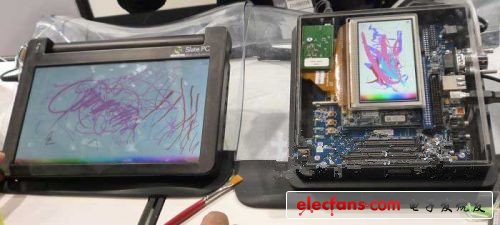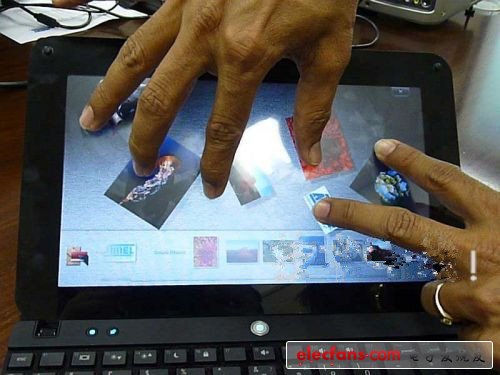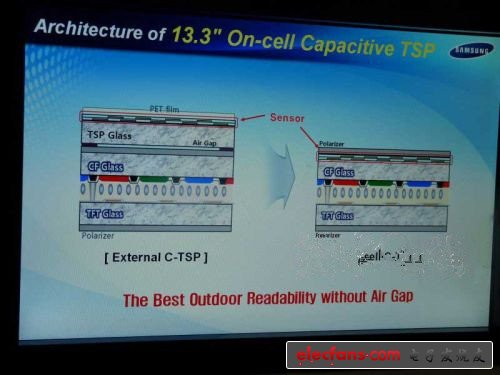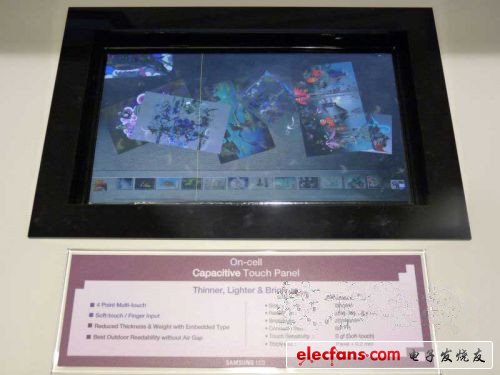Touch panel technology is rapidly advancing, and the previous "common sense" has become unsuitable. For example, the current mainstream resistive film touch panel realized multi-touch that was considered "impossible" 1 or 2 years ago. The electrostatic capacity type used in portable terminals such as the iPhone is steadily supporting large-size panels, which was generally considered by the industry to be "difficult" to achieve. The “integrated technology with liquid crystalâ€, which failed to achieve mass production due to difficulty in ensuring yield and display performance, is expected to become a reality with the introduction of the new concept of “On-cellâ€. It is expected that the integrated panel will be available as early as 2010 Mass production will begin in the second half of the year.
Resistive film type can realize multi-touch
French Stantum company realized multi-touch using resistive film type. The company has adopted a digital resistive film type (also known as a matrix resistive film type) instead of the common analog resistive film type, and developed a detection technology that can realize multi-touch.
In the common analog resistance film type, the entire electrode surface of the upper and lower base plates is a uniform resistance film (transparent conductive film). By contacting the upper electrode and the lower electrode, the position is detected based on the voltage of the conduction point. The digital resistance membrane type adopted by Stantum has a different electrode structure from the analog resistance membrane type. A resistive film formed in a linear pattern is used instead of uniformly distributing the resistive film over the entire surface. Touch them up and down in the cross direction to form a touch panel. The company is currently developing a digital resistive film touch panel that supports input of more than 10 points

Digital resistance film touch panel (Stantum) supporting input of more than 10 points
Introduce electrostatic capacity panels into tablet terminals and personal computers
At present, various companies are simultaneously promoting the development of large-capacity electrostatic capacity panels. In addition to conventional mobile phones, it is also planned to expand the market of electrostatic capacity touch panels to tablet terminals and personal computers.
3M Corporation of the United States exhibited a 22-inch LCD display equipped with a capacitive touch panel at the AV Equipment Exhibition "InfoComm 2010". 20 points can be detected simultaneously. It is said to be equipped with three detection ICs for capacitance type
Atmel of the United States will begin mass production of controller ICs for electrostatic capacity touch panels that can support up to 15-inch displays at the end of June 2010. In September 2009, the company put into operation the "mXT224" controller IC for smart phones that supports 2.5-5 inch small screens. Using three controller ICs and one MCU, an evaluation kit based on a 10.1-inch electrostatic capacitance touch panel was made, and a work demonstration was made to mobile phone manufacturers and personal computer manufacturers (see this site report).
Hitachi High-Tech is currently selling controller ICs that support displays larger than 7 inches, and plans to market controller ICs that support a maximum of 8.9 inches displays in 2010. The controller IC sold by Hitachi High-Tech from Taiwan FocalTech Systems is characterized by the use of a mutual capacitance type detection method. This detection method has the multi-touch detection accuracy and response speed of the electrostatic capacitive touch panel Advantage. It is reported that a controller IC can support up to 8.9-inch displays.

10.1 inch electrostatic capacity touch panel demonstration (Atmel)
Technology that integrates with LCD
The integration with liquid crystal can reduce the thickness and weight. The integrated technology of LCD and touch panel will be unveiled from the second half of 2010. The thickness of the current touch panel is about 1 mm. This is equivalent to about 7% of the thickness of the iPad. If the external touch panel components can be integrated with the liquid crystal, it is expected to be thinner and lighter.
In-cell technology proposals for embedding touch sensor functions in pixels of liquid crystals have been proposed before, but it has been difficult to ensure mass production due to the difficulty in ensuring yield and display performance. The use of a complicated semiconductor manufacturing process to embed the touch sensor function inside the pixels on the bottom plate of the TFT array has become a stumbling block to ensure yield. In addition, after the touch sensor is embedded in the pixel, the area available for display is reduced, which is one of the reasons for the deterioration of the image quality.
However, the advent of "On-cell" technology has completely changed this situation. This technology can be integrated on the color filter substrate instead of inside the pixels on the TFT array substrate by setting the touch sensor function. Since it is only necessary to form a simple transparent electrode between the bottom plate of the color filter and the polarizing plate, it is easy to ensure the yield. In addition, since the area of ​​the effective display area within the pixel is not reduced, the image quality deterioration phenomenon hardly occurs. The former traditional method of embedding the touch sensor function inside the liquid crystal panel is called “In-cellâ€, and the latter can configure the touch sensor function on the liquid crystal panel, so it is called “On-cellâ€. Panels using this technology will begin mass production in the second half of 2010 and are expected to be adopted by large mobile phone manufacturers.

Structure of On-cell projection type electrostatic capacitance type touch panel (Samsung Electronics)
The share of touch panels in different ways changes rapidly
The share of touch panels in various ways has also changed to overturn the previous "common sense". Until 2 to 3 years ago, the resistive film type had an absolute advantage of over 70% for a long time. However, with the advent of the iPhone in 2007, the influence of electrostatic capacity in the entire market has rapidly increased. After the iPad was launched in 2010, the status of the electrostatic capacity type was further improved.
The results of the US DisplaySearch survey show that of the $ 4.3 billion in supply of touch panels in 2009, the resistance film type accounted for about 50%, and the electrostatic capacity type was close to about 35%. The company predicts that in 2010, with the expansion of the smartphone market and the advent of the iPad, "the electrostatic capacity type will be translocated with the resistive film type." By 2016, the electrostatic capacity "will exceed 50%."

3 Mm /8 Mm Nano Tip,Electronic Board Marker Pen,Touch Board Marker Pens,Infared Smart Board Marker
Shenzhen Ruidian Technology CO., Ltd , https://www.wisonens.com
![<?echo $_SERVER['SERVER_NAME'];?>](/template/twentyseventeen/skin/images/header.jpg)